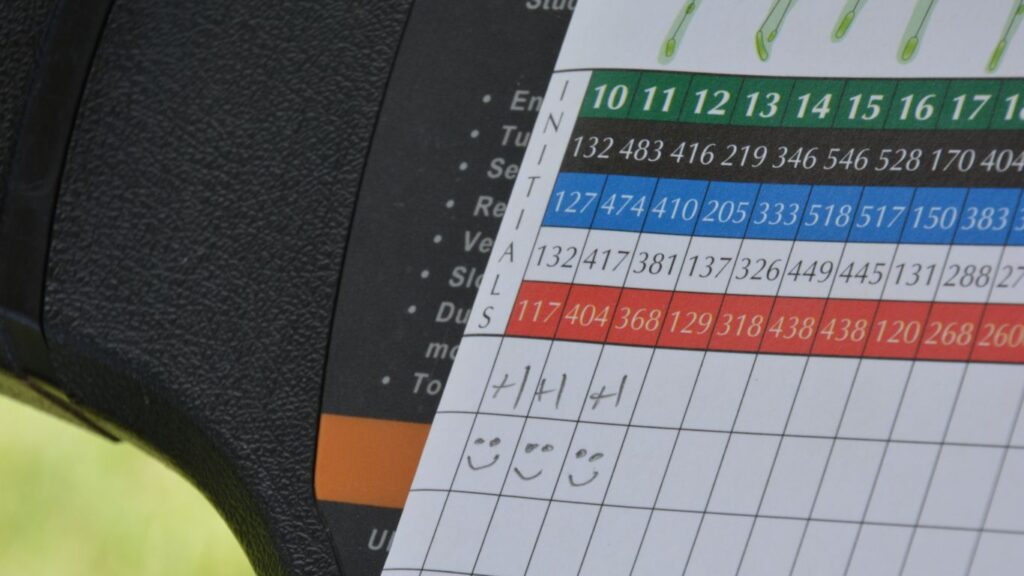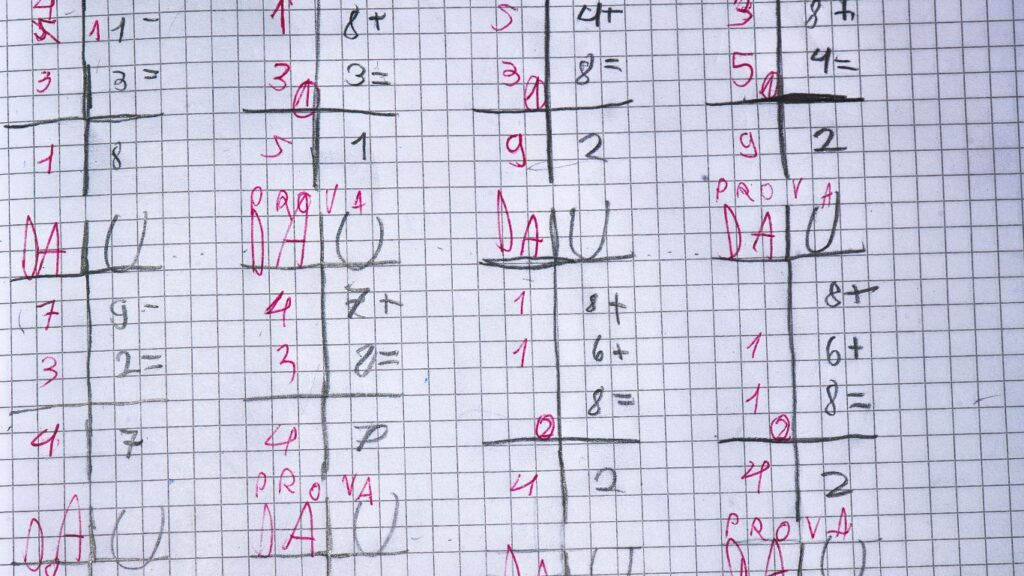The golf handicap system is a fundamental aspect of the game that allows players of different skill levels to compete on an equal footing. Understanding how to calculate a golf handicap is essential for any golfer looking to improve their game and participate in competitive play. The formula for determining a golf handicap involves taking the average of the best 10 scores out of the last 20 rounds played, adjusting it based on the difficulty rating of the course, and then multiplying it by 0.96.

By having a handicap, players can track their progress over time and set realistic goals for improvement. It also provides a way to level the playing field when competing against others with varying skill levels. Learning how to calculate your golf handicap not only helps you understand where you stand in terms of skill level but also allows you to see areas where you may need to focus on improving in order to lower your score. In essence, having a solid grasp of the golf handicap system is critical to becoming a well-rounded and competitive golfer.
Purpose of a Handicap: Why is it important?
A golf handicap is a crucial tool in the world of golf, as it levels the playing field for players of varying skill levels. By calculating a player’s handicap, it allows them to compete against others on an equal footing, regardless of their experience or ability. This fosters a sense of fairness and competitiveness within the game, making it more enjoyable for all participants. Additionally, having a handicap provides players with a clear understanding of their skill level and progress over time.
To calculate a golf handicap, one must first obtain their Handicap Index from their golf club or organization. This index is based on the player’s recent scores and takes into account the difficulty of the courses they have played. Once this index is determined, it can be used in conjunction with the Course Rating and Slope Rating of different classes to calculate a player’s Course Handicap for that particular course. This calculation helps adjust a player’s score based on the difficulty of the course they are playing, ensuring fair competition among all players regardless of skill level.

Calculating the Handicap Index: Key components
Calculating the Handicap Index in golf involves several key components that are essential for players to understand. The first step in calculating the Handicap Index is collecting a minimum of five scores from recent rounds of golf. These scores are then adjusted using the Course Rating and Slope Rating of each course played, which takes into account the difficulty of the course relative to a scratch golfer’s performance. By incorporating these ratings, players can normalize their scores across different classes to ensure a fair calculation of their handicap.
Once the adjusted scores are determined, they are used to calculate the player’s Handicap Differential for each round by subtracting the Course Rating and multiplying by 113 (standard slope rating). The next crucial component is averaging the lowest differentials and applying a handicap formula to arrive at the final Handicap Index. This index represents a player’s potential ability on any given course and allows for fair competition among golfers of varying skill levels. Understanding and accurately calculating these key components is vital for recreational golfers looking to improve their game while maintaining fairness in competition.
Adjusting for Course Rating and Slope Rating
Adjusting for Course Rating and Slope Rating is an essential aspect of calculating a golf handicap accurately. Course Rating represents the difficulty level of a golf course for scratch golfers, while Slope Rating reflects the relative difficulty of the course for higher handicap players. By taking into account both factors, a golfer can obtain a more precise handicap that accounts for variations in course difficulty. To calculate your golf handicap, you need to first determine your Handicap Index by using the formula: (Score – Course Rating) x 113 / Slope Rating. This calculation ensures that each round played on different courses is adjusted accordingly based on their specific Course and Slope Ratings.
Understanding how to adjust for Course and Slope Ratings not only helps in determining one’s handicap but also in comparing performances across different courses and playing conditions. It provides a standardized method for evaluating players’ skills regardless of where they are playing. Adjusting for these ratings allows golfers to have a fair and equitable competition by leveling the playing field based on course difficulty. Incorporating these adjustments into calculating handicaps adds another layer of depth to the game, emphasizing strategic play rather than simply focusing on raw scores alone.
Recording Scores and Updating Handicap Index
Calculating and updating my golf handicap index has become a routine that I diligently follow after every round of golf. The process involves recording my scores accurately and ensuring that all scorecards are filled out correctly with the date, course rating, and slope rating. To calculate my handicap index, I use the World Handicap System formula, which takes into account my adjusted gross score, the course rating, and the slope rating of the course I played. This calculation allows me to have a fair and accurate representation of my playing ability.
Updating my handicap index regularly is crucial as it reflects any improvements or changes in my game over time. By consistently monitoring and adjusting my handicap index based on my recent performances, I can track progress and set realistic goals for improvement. It also provides a level playing field when competing against other golfers with different skill levels. Overall, keeping an up-to-date handicap index not only helps me gauge my current skill level but also motivates me to continue honing my skills on the golf course.

Improving Your Handicap: Tips and Strategies
Improving your handicap in golf is a challenging yet rewarding journey that requires dedication and strategic planning. One of the first steps in this process is learning how to calculate your golf handicap accurately. This involves understanding the formula used to determine your handicap index, which takes into account your scores from recent rounds of golf, as well as the difficulty ratings of the courses you played on. By utilizing online calculators or seeking guidance from experienced players or golf professionals, you can quickly determine your current handicap index and track your progress over time.
Once you have a clear understanding of your golf handicap, it’s essential to implement practical tips and strategies to improve it. Consistent practice and playing regularly are critical components in honing your skills and lowering your scores. Focusing on specific aspects of your game, such as putting, chipping, or driving, can also help target areas for improvement. Additionally, seeking lessons from a qualified instructor can offer valuable insight into refining your technique and developing a more consistent swing. By setting achievable goals and staying committed to continuous improvement, you can steadily enhance your performance on the course and see positive results reflected in a lower handicap over time.
Frequently Asked Questions
1. What is a golf handicap, and why is it important?
A golf handicap is a numerical measure of a golfer’s playing ability, used to level the playing field when players of varying skill levels compete against each other.
2. How do I calculate my golf handicap?
To calculate your golf handicap, you need to obtain your scores from recent rounds, adjust them for course difficulty, and then use a specific formula to determine your handicap index.
3. Can I have a handicap in golf if I’m starting to play?
Yes, even beginner golfers can establish a handicap by submitting scores from at least 54 holes played on an eligible course.
4. How often should I update my golf handicap?
It is recommended to update your golf handicap after each round of play in order to reflect changes in your playing ability accurately.
5. Do different countries have different methods for calculating golf handicaps?
While there are variations in how golf handicaps are calculated around the world, the basic principles remain consistent across most systems.
6. Can I use online tools or apps to calculate my golf handicap?
Yes, there are many online tools and mobile apps available that can help you quickly calculate and track your golf handicap.
7. Is having a lower or higher handicap better in golf?
In general, having a lower golf handicap indicates a higher level of skill and proficiency in the game.
8. Can my golf handicap change over time?
Yes, your golf handicap will fluctuate based on your performance in recent rounds of play, so it’s essential to update and monitor your handicap index regularly.
Conclusion
Calculating your golf handicap is an essential step in understanding and improving your game. By following the USGA formula and inputting your scores accurately, you can track your progress and identify areas for improvement. Remember that a golf handicap is meant to level the playing field and allow players of different skill levels to compete fairly. With consistent tracking and dedication to improving your game, you can see your handicap decrease over time. So, grab your clubs, hit the course, and start calculating your golf handicap today!
Calculating your golf handicap is essential for monitoring your progress and ensuring fair competition among players of different skill levels. By following the USGA Handicap System guidelines and using a reliable handicap calculator, you can accurately determine your handicap index and adjust it based on your recent scores. Remember to regularly update your scores and revise your handicap to reflect your current performance on the course. Understanding how to calculate your golf handicap will not only help you track your improvement but also enhance the overall enjoyment of the game. So, take the time to calculate your handicap today and start playing with confidence!









